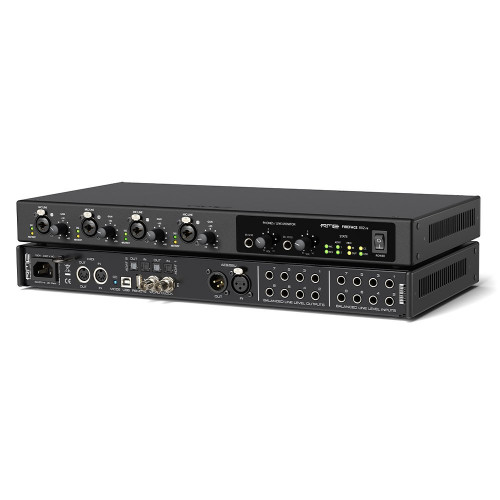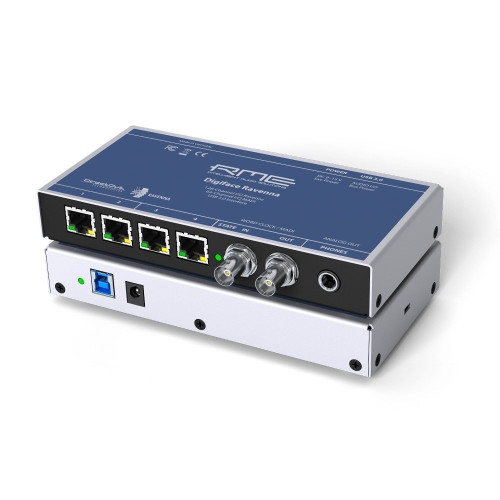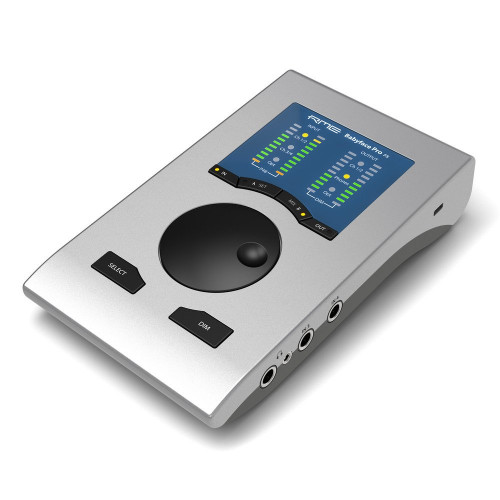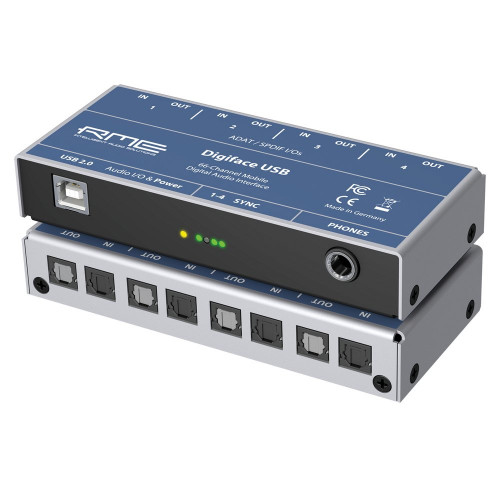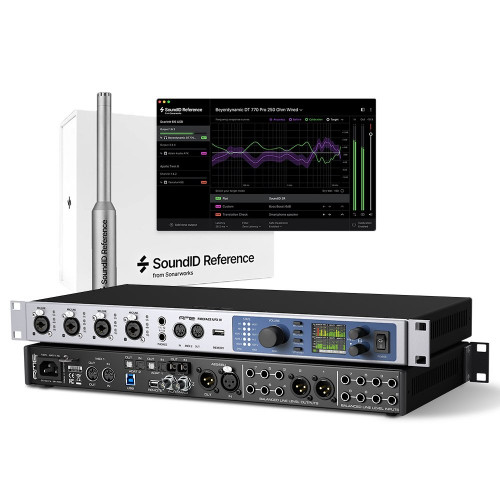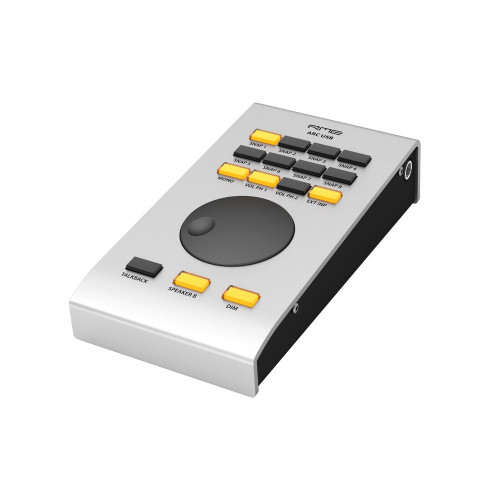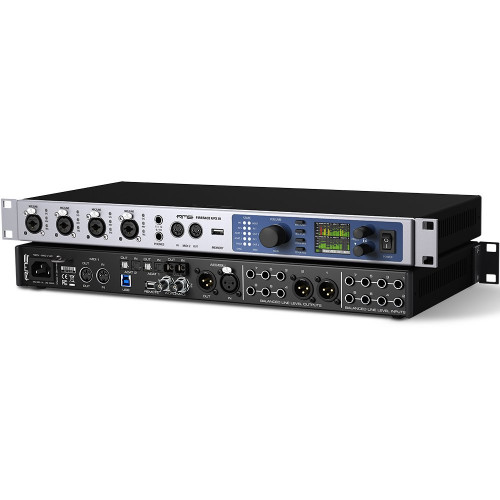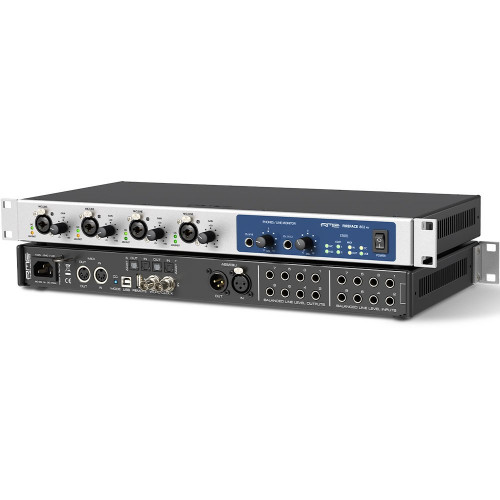RME MADIface XT II
394-Channel Triple MADI
USB 3.0 Audio Interface
- Second-generation update to the MADIface XT
- 196 Input / 198 Output channels
- 2 x MADI I/O optical
- 1 x MADI I/O coaxial
- 2 x Analogue Mic/Line Preamp Input (XLR/TRS)
- 4 x Analogue Output (Main XLR + Phones)
- 1 x AES/EBU I/O via breakout cable (included)
- 1 x MIDI I/O via breakout cable (included)
- 3 x virtual MIDI I/O (via MIDI over MADI)
- 1 x USB 3.0
- 1 x USB connection for RME ARC USB (sold separately)
Features
- TotalMix FX
- TotalMix Remote
- SteadyClock FS
- Room EQ
- DIGICheck & DIGICheck NG
- Class Compliant Mode
- AutoSet Digital Gain Control
- 5 Year Warranty (when purchased from ourselves or one of our Authorised UK Dealers)
MADI to DAW
RME presents the MADIface XT II a 394-channel 192 kHz USB 3.0 audio interface with comprehensive connectivity and control options for live and studio work.
The successor to RME's popular MADIface XT interface, the MADIface XT II features updated digital and analogue circuitry and surpasses the first generation with significantly improved analogue and digital performance.

Connectivity and Features
The MADIface XT was the world's first USB 3.0 audio interface at the time of its release - and impressed with its combination of an extremely high channel count, comprehensive connectivity and a compact desktop housing.
With two practical mic/line preamps (XLR/TRS combo inputs), two balanced XLR line outputs, a stereo line headphone output, a variety of digital signal options (MADI coaxial and optical, MIDI/AES, word clock), as well as an additional PCI Express connection, the MADIface XT left nothing to be desired in terms of connectivity.

New Analogue Records
The second generation MADIface XT II maintains this successful formula and surpasses the signal values of its predecessor in numerous areas. Among other things, the MADIface XT II convinces with a higher signal-to-noise ratio and a lower THD value during AD conversion.
Furthermore, the maximum balanced line output level of the XLR line outputs has been increased from +15 dBu to +24 dBu. The stereo headphone output of the MADIface XT II also delivers a significantly higher output level of +19 dBu and, with an output impedance of 1 Ohm, significantly more power than its predecessor. All outputs also have several switchable level options.
New Digital Circuit Board
On the new digital board, the previous analogue mini-DIN socket for remote control of individual functions has been replaced by an ARC USB remote port, which enables comprehensive control of the MADIface XT II with the optional RME ARC USB.

Room EQ
Alongside its built-in 3-Band EQ (plus Lo-Cut) on every channel, the MADIface XT II now also features RME's Room EQ, an additional 9-Band EQ on up to 20 mono output channels (or 10 stereo channels, including the headphone output).
Room EQ also includes Delay Compensation, adjustable from 0 ms up to 42 ms, in steps of 0.01 ms. Up to 20 of these delays can be activated, matching the number of 9-band PEQs.
Whether you’re working in Stereo, 5.1, 7.1 or Immersive Audio formats, say goodbye to unwanted room resonances and hello to your new finely-calibrated monitoring environment.Powerful Applications for Mixing, Monitoring and Measurement included
The MADIface XT II comes with the TotalMix FX DSP mixer offering comprehensive routing and monitoring options, as well as the DigiCheck Analyzer allowing to measure and analyze the digital data feed in both directions with maximum precision.
TotalMix FX can completely replace an external mixer, enabling the creation of multiple latency-free monitor mixes with EQ, Dynamics, Reverb and Delay for any outputs, incl. main monitors and headphone mixes for musicians.
The additional TotalMix Remote is a remote control for TotalMix FX, to control the hardware mixer and effects in RME audio interfaces.
TotalMix Remote mirrors the current state of the host system on the iPad and Windows/Mac computers - the entire mixing state, the complete routing, all FX settings, up to the level meters, and everything in real-time. Easily adjust all the mixer and FX settings from a distance, via Ethernet and WiFi.

TotalMix FX mixer with comprehensive routing, monitoring and effects options
Femtoseconds for Clocking
With the latest SteadyClock FS, the MADIface XT II features RME's latest clock and jitter rejection technology. Based on a femtosecond clock, SteadyClock FS reduces the intrinsic jitter of the MADIface XT II to an absolute minimum, and filters clock jitter efficiently from as low as 1 Hz.
USB 3 Class Compliant Audio
The MADIface XT II operates in two different modes: driver-based USB 3 and Class Compliant. The Class Compliant mode is a standard that is natively supported by operating systems like Windows, Mac OSX and Linux distributions. No proprietary drivers are required, the device will be directly recognized when the CC firmware is loaded.
The new MADIface XT II focuses on USB 3.0, as PCIExpress can no longer be used externally. The new device's Class Compliant mode has been significantly upgraded, as all 394 channels can now be transmitted simultaneously without a driver. In addition, there are various formats and settings for the channel sequence in order to make optimum use of Class Compliant.
ARC USB Remote Control - Plug’n Play Plus
The optional available ARC USB connects to your computer via USB, and talks to TotalMix FX directly. It has 15 freely assignable and illuminated buttons, one encoder wheel, and a TS jack to connect a foot switch.
The ARC USB is a USB 1.1 MIDI remote control for the MADIface XT II. Thanks to operating as a UAC 1 class device, it is natively compatible to Windows and Mac OS X. As soon as it is present in the operating system, TotaIMix FX will automatically detect the ARC USB, and communicate with it via simple MIDI remote commands to control the XT II.
Find out more about the RME ARC USB

Direct access to the most frequently used actions and commands of TotalMix FX
More Outstanding Features
TotalMix FX - Mixing/Routing with superior features for Studio and Live Work
Since 2001 TotalMix added unlimited routing and mixing to RME‘s audio interfaces. Its unique capability to create as many independent submixes as output channels available turned it into the most flexible and powerful mixer of its kind.
Find out MoreDigiCheck - The Secret Weapon of High Resolution Audio Measurements
RME Audio interfaces not only provide you with a professional digital audio interface, but also with a free available software tool: DigiCheck, for metering, testing, measuring and analyzing digital audio streams.
Find out MoreSteadyClock FS - Reference class Digital Clocking
Excellent performance in all clock modes and High Quality Analog Conversion to hear your mix as it is, with lowest jitter and highest jitter immunity.
Find out MoreAbout MADI - Multi Channel Digital Audio Protocol
MADI is a protocol that has evolved alongside RME to be the most widely accepted multi channel digital audio protocol on the market. RME’s MADI-based systems deliver incredible reliability, particularly in applications where failure is not an option.
Find out More






























